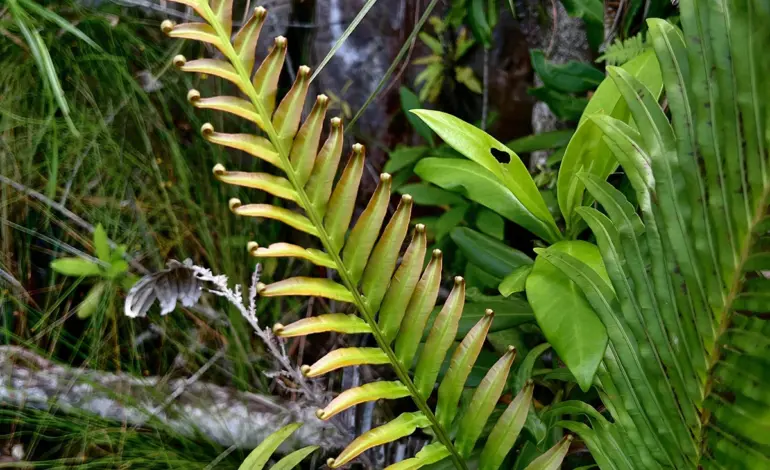Scientists Discover Ferns Can Extract Rare Earth Metals Naturally

A research team in China has uncovered a surprising natural source for rare earth elements (REE), which are essential for various technological applications. Led by geochemist Liuqing He from the Chinese Academy of Sciences, the scientists found that the fern species Blechnum orientale can crystallize REE minerals within its tissues under ordinary environmental conditions. This discovery could significantly change the landscape of REE extraction, currently dominated by destructive mining practices.
Typically, REEs require intensive mining from specific types of igneous rocks where they occur in small quantities. The team’s findings, published in the journal Environmental Science & Technology, highlight an alternative approach that could mitigate the need for such environmentally damaging methods. By utilizing B. orientale, researchers are exploring the potential of a process known as phytomining, which employs hyperaccumulator plants to extract metals from the soil.
The significance of this discovery lies in the fact that B. orientale thrives in soils with high levels of heavy metals that would be toxic to most other plants. He emphasized the groundbreaking nature of their findings, stating, “This fern can facilitate REE mineralization, specifically producing the mineral monazite, which was previously only found in deep Earth conditions.” The presence of monazite is particularly crucial, as it is a primary source of REEs such as neodymium, dysprosium, and praseodymium—elements vital for electric vehicle motors and various components in smartphones.
This innovative approach not only indicates a potential reduction in mining-related ecological damage but also addresses the global concerns regarding REE supply chains. Currently, China controls approximately 70% of the global rare earth mining and processing market, which raises questions about the stability and sustainability of supply for countries reliant on these materials.
The study, conducted in South China, utilized advanced microscopic imaging and chemical analysis techniques to examine the fern’s ability to absorb and crystallize REE minerals. While this discovery does not yet indicate that B. orientale can produce REEs in large quantities, it opens the door for further research into phytomining as a viable alternative for sourcing these valuable elements.
Future investigations will focus on whether other plant species can also self-organize REEs and how to efficiently extract the monazite from the fern without significant loss of resources. He and his team are optimistic about the implications of this research, stating, “This discovery reveals an alternative pathway for monazite mineralization under remarkably mild conditions and highlights the unique role of plants in initiating such processes.”
As the global demand for rare earth elements continues to grow, particularly in the context of renewable energy technologies, this research offers a promising avenue for sustainable extraction methods that could reshape the industry’s future.






